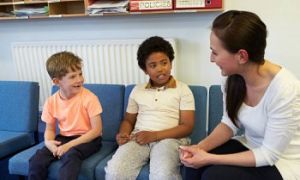Outdoor spaces hold great significance in early education and care settings which is why they are highlighted in Learning Environments, one of eight pedagogical practices put forward in the EYLF. It further says that Outdoor learning is a feature of Australian learning environments. They offer a vast array of possibilities not available indoors. One of the ways that outdoor spaces do this is by allowing children access to elements of Nature. The following article provides the importance of natural elements and strategies educators can use to enrich children’s play and learning experiences.
Offers A Varied Sensory Diet
The more children use all their senses early in their lives, the more their brains build neural pathways and synapses, leading to better cognitive skills in later life. And Nature is a veritable treasure trove of myriad sensory experiences. So when out on a nature excursion or even a walk through the outside garden, help children notice different sights and sounds – ranging from the croaking of a frog and varied bird calls to brightly coloured flowers and visual fractal shapes found in patterns of leaves, clouds and outlines of hills. Plan a tactile scavenger hunt through the outdoors to explore textures like smooth, rough, grainy, dry, squishy, prickly and soft. A herb or edible garden can make for an enjoyable sensory experience as you crush a stalk of mint or rosemary between your fingers and invite children to smell and taste. Encourage your little learners to play with elements like water and sand; indeed some children find it relaxing to squelch mud or dig their fingers in the sand. If you find it difficult to provide sand environments because of the potential of cats using the sand as a litter box, consider covering it with a shade material, which is a knitted high-density polyethylene that enables airflow while keeping cats at bay.
Foster Physical Development
Engagement with natural elements can be a great way to get children to exercise their gross and fine motor skills as well as coordination and balance. Make available rocks, stones and logs in the outdoor space for children to step up and down, climb and balance. Indeed climbing natural elements requires more judgement than climbing equipment. When children climb a piece of play equipment they quickly find out that the bars are placed at standard distances and that it has been designed to take their weight. However, when children climb a tree, they must use their senses to judge if they can reach the branch and if it will hold them. Also since trees are natural, their branches are unevenly spaced and require children to think carefully about where and how to step. If your outdoor space does not have trees, consider bringing in felled trees, driftwood, roots of large trees, and rocks to give children more open-ended play experiences.
In the outdoors, encourage children to look for pinecones, pebbles and colourful leaves. This will give them lots of opportunities to practice using visual-motor coordination and fine motor skills through actions like picking and plucking. Also, children touch sand, grass, dirt or leaves, they are exposed to a wide sensory diet and also acquire a stronger immunity. Sturdy plants like bamboo can not only be used for vigorous play but also provide dappled light; the feeling of sunlight filtered through the leaves of plants, is often extremely soothing and allows children to experience the best of outdoor spaces.
Boost Learning
Incorporating natural elements can greatly enhance the learning potential of outdoor spaces. Educators can, for example, use water and sand play to start discussions on properties of matter; thus children would discover that water flows from higher to lower level until the same level has been attained but not sand. What’s more, while building sand castles, children are likely to find out that dry and damp sand behave differently and this in turn can be used to learn cause and effect. Also scooping and pouring activities during sand and water play can be used to teach foundational numeracy skills like measuring. Similarly, the changing appearance of trees and flowering plants over time can be used to introduce the concept of seasons or the process of flowering and fruition.
Equally importantly, natural elements like plants, rocks and sand can help children develop a sense of belonging to their own culture and land. Many of Australia’s plants are endemic, meaning they are not found anywhere else in the world. These native plants not only serve as important symbols for indigenous cultures but have long been used for food, medicinal purposes, building material and other daily practices. Again rock and sand art are important indigenous art forms and have been used to affirm the people’s connections with their environment. Try and grow native plants into your service outdoors or look for ways they can be integrated into learning experiences so as to affirm the sense of identity for children and families.
Using natural elements in outdoor spaces can support children’s social and emotional experiences as well. A tent made from sticks or a sheltered space bordered with bamboo sticks can allow children some quiet time in the outdoors or fulfil the need for hiding that many children experience when going through enveloping, enclosing or positioning schemas. Even a rainy day does not have to mean the children have to remain indoors – raincoats and gum boots can be the start of a great adventure and teach children all about changing seasons.
Natural objects like pebbles, stones, leaves, nuts, bark and sticks can make for highly interesting play material. They can be used both for outdoor craft activities as well as to practice foundational numeracy concepts like sorting, sequencing and counting.
Teach Sustainability
Engaging with natural elements in outdoor spaces is one of the most effective ways that children can learn sustainability. Making water available in limited quantities, for example, a container per child, helps children learn that they need to use it wisely, and provides an opportunity for intentional teaching about conservation. Also involving children in outdoor composting projects can teach them recycling practices like sorting compostable matter in greens and browns or learning to put food scraps in the compost.
Guidelines For Using Natural Elements In Your Outdoor Space
- Design your outdoor space to include natural elements in varied textures, heights and dimensions like trees, shrubs, bushes, and hedges besides rocks, stones, sand and an area for water play. Consider using real rather than artificial grass and ensure that there are opportunities for shade to protect children from direct sunlight.
- Before purchasing a plant, check with the nursery to be sure it is not poisonous. Also bear in mind that children may have allergies to natural elements like pollen, and plant fibres or in which case their exposure to outdoor spaces will have to be appropriately modified.
- Also, conduct regular risk assessments and sweeping of outdoor spaces to ensure that they are free from hazards like sharp objects, and toxic substances like some varieties of mushrooms or poisonous insects.
Being mindful of the above guidelines will help educators plan rich learning environments so that children get to experience all the benefits of playing in Nature while being safe and healthy.
Further Reading
Incorporating Natural Materials In The Learning Environment - The following article provides information on Natural Materials In The Learning Environment, Practical Ideas With Natural Materials, Using Natural Materials Safely and Responsibly and more.
Creating Outdoor Spaces For Children In Early Learning Services - The following provides strategies on how to create meaningfully designed outdoor spaces for children.
Teaching Children About Sustainability - The following article provides information on Environmental responsibility, Teaching Children About Sustainability and more.
EYLF Learning Outcome 2: Children Are Connected With And Contribute To Their World - The following lists the sub outcomes, examples of evidence when children can achieve each sub outcome and how educators can promote and help children to achieve EYLF Learning Outcome 2: Children Are Connected With And Contribute To Their World.
References:
The Importance Of Natural Elements, Education Hub NZ
Babies and Outdoor Play, ACECQA
Creating The Perfect Play Space, ACECQA


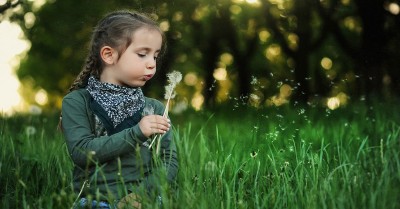
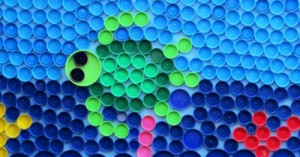
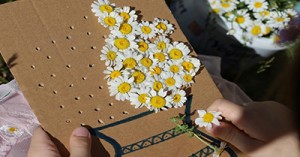
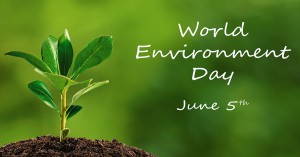
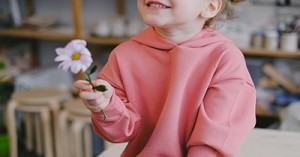
 As an Educator in Australia, your pay rate falls under the Children’s Services Award 2010. This award states the minimum amount that an employer can
As an Educator in Australia, your pay rate falls under the Children’s Services Award 2010. This award states the minimum amount that an employer can When working as a qualified Early Childhood Teacher (with a university degree) within a service, your rate of pay will come from the Educational Services
When working as a qualified Early Childhood Teacher (with a university degree) within a service, your rate of pay will come from the Educational Services When working as a Diploma Qualified Educator your pay rate is from the Children's Services Award 2010. This Award states your minimum rate of pay
When working as a Diploma Qualified Educator your pay rate is from the Children's Services Award 2010. This Award states your minimum rate of pay When working as a Cert 3 Qualified Educator, your pay rate is from the Children's Services Award 2010. This Award states your minimum rate of
When working as a Cert 3 Qualified Educator, your pay rate is from the Children's Services Award 2010. This Award states your minimum rate of Educational Leaders play a crucial role in their early childhood service by ensuring that the educational program aligns with best practices and supports the holistic
Educational Leaders play a crucial role in their early childhood service by ensuring that the educational program aligns with best practices and supports the holistic In early childhood education and care, ratios are more than a technicality—they are a frontline safeguard. Every child deserves responsive supervision, emotional connection, and developmental
In early childhood education and care, ratios are more than a technicality—they are a frontline safeguard. Every child deserves responsive supervision, emotional connection, and developmental With the new national child safety reforms kicking in on 1 September 2025, early childhood services like yours have a real opportunity to lead the
With the new national child safety reforms kicking in on 1 September 2025, early childhood services like yours have a real opportunity to lead the Here’s a comprehensive Mobile Phone and Smart Watch Policy tailored for early childhood education and care (ECEC) services in Australia, aligned with the latest 2025
Here’s a comprehensive Mobile Phone and Smart Watch Policy tailored for early childhood education and care (ECEC) services in Australia, aligned with the latest 2025 The Sea of Fish Challenge is a national initiative that invites children, educators, families, and communities to create and display fish artworks as a symbol
The Sea of Fish Challenge is a national initiative that invites children, educators, families, and communities to create and display fish artworks as a symbol Across the early childhood education and care sector, educators are sounding the alarm: current staffing ratios are insufficient to deliver safe, meaningful, and developmentally appropriate
Across the early childhood education and care sector, educators are sounding the alarm: current staffing ratios are insufficient to deliver safe, meaningful, and developmentally appropriate

